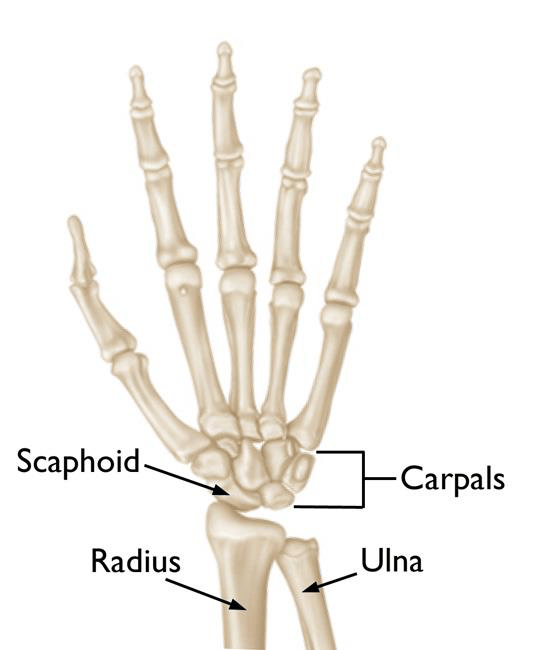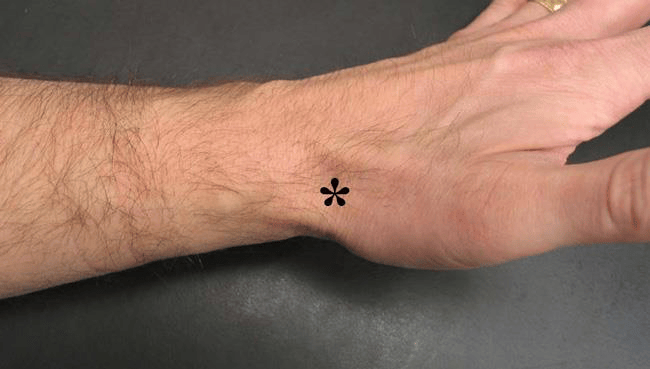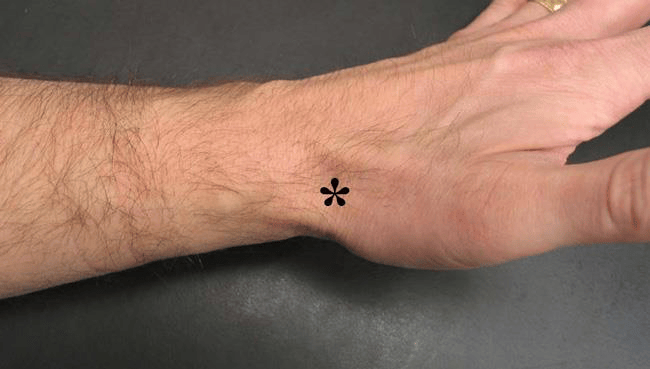Scaphoid Fracture of the Wrist
Patient Information
Overview
A scaphoid fracture is a break in one of the small bones of the wrist. This fracture often causes by a fall onto an outstretched hand. Where patients often experience pain and tenderness just below the base of the thumb that get worsen when they try to pinch or grasp an object. Depending on the severity and the location of the fracture, treatment can range anywhere from casting to surgery. Due to the poor blood supply to the area of the scaphoid, a fracture can further interfere with the blood flow that may result to complications during the healing process.
Anatomy
The wrist is formed by the ends of the radius and the ulna, and eight small carpal bones. The scaphoid bone is one of the carpal bones, locating right above the radius on the thumb side of the wrist. The scaphoid bone is important for both motion and stability in the wrist joint. It can be identified when your thumb is held in a “hitch-hiking” position. Where you will see an indent formed by the thumb tendons called the “anatomic snuffbox.” This is also the area patients would typically experience pain and tenderness when the scaphoid bone is fractured.

Description
Scaphoid fractures are classified according to the location and the severity of displacement. Most scaphoid breaks in its mid-portion, the waist. However, it can fracture at the proximal and distal ends of the bone.
Type of fractures include:
-
- Non-displaced fracture: the bone fragments line up correctly.
- Displaced fracture: the bone fragments have moved out of their normal position. There may be gaps between the pieces of bone or fragments may overlap each other.

Illustration and x-ray showing a break in the mid-portion, or "waist," of the scaphoid.
Cause
There are no specific risk factors or diseases that increase one’s likelihood of getting a scaphoid fracture. This type of fracture most often occurs when you fall onto an outstretched hand, with your weight landing on the palm. Depending on your falling position, the distal radius can also be fractured. Motor vehicle collisions or sport injury can also result in a scaphoid fracture. Some recent studies have shown effectiveness in using wrist guards during high-energy activities, such as skating or snowboarding, in decrease your chance of breaking a bone around the wrist.
Symptoms
Scaphoid fractures related symptoms include:
-
-
- Typically pain and swelling are present in the anatomic snuffbox (indicated in the picture below) and on the thumb side of the wrist. The pain may be noticeable when you use your thumb or wrist, especially when you pinch something.
- Scaphoid fractures can be difficult to distinguish because some do not present severe pain and may be mistaken for a wrist sprain.
- Therefore, if you experience persistent pain following an injury, it is important to see your doctor to avoid potential complications.
-

Symptoms of a scaphoid fracture often occur in the anatomic snuffbox at the base of the thumb as indicated by the flower sign.
Doctor Examination
Physical Examination
Your doctor will first examine your general health and will have you describe your symptoms and how the injury occurred. Your doctor will then examine your wrist and also look for:
-
- Swelling
- Bruising
- Loss of motion
Tests
X-rays. Your doctor will order an x-ray to examine your bone structure and determine whether or not you have a scaphoid fracture, whether your bone is displaced, or if you have any other fractures. Sometime a scaphoid fracture does not show up on an x-ray immediately following the injury and may become visible after 2-3 weeks. If your doctor suspects that you have a fracture, he/she may recommend you wear a wrist splint or cast during this waiting period to protect your wrist from further injury or complications.
Magnetic resonance imaging (MRI) scan. Your doctor may order an MRI to further examine the bones and soft tissues in your wrist. An MRI can sometimes detect a scaphoid fracture before it can be seen on x-rays.
Computerized tomography (CT) scan. A CT scan can be helpful at detecting a scaphoid fracture and can further indicate any bone displacements. Your doctor will use information from the CT scan to help determine your treatment plan.
Treatment
Your doctor will recommend the best treatment for you, whether nonsurgical or surgical, based on many the factors, including:
- The location of the break in the bone
- Whether the bone fragments are displaced
- How long ago your injury occurred
Nonsurgical Treatment
Fracture near the thumb. A scaphoid fracture near the thumb (distal pole) often heals in a few weeks with proper treatment. For good protection and activity restriction, your doctor may place your forearm and hand in a cast or splint below the elbow. This part of the scaphoid bone has a good blood supply, therefore it usually heals faster than a fracture at another location on the scaphoid. However, healing time varies for each patient. In the process, your doctor will monitor your healing with x-rays or other imaging studies.
Fracture near the forearm. If the scaphoid is broken in the middle of the bone (waist) or closer to the forearm (proximal pole), healing can be more difficult because these areas do not have good blood supply. Your doctor may place your forearm and thumb in a cast above stretching above the elbow to further stabilize the fracture.
Bone stimulator. In some cases, your doctor may recommend the use of a bone stimulator to assist in fracture healing. This is a small device that delivers low-intensity ultrasonic or pulsed electromagnetic waves to stimulate healing.
Surgical Treatment
Your doctor may recommend surgery if your scaphoid is broken at the waist or proximal pole or if pieces of bone are displaced. The goal of surgery is to realign and stabilize the fracture, giving it a better chance to heal.
Reduction. There are many techniques your doctor could perform for a reduction surgery. Generally, your doctor will administer a local anesthesia then manipulate the bone back into its proper position. In some cases, this is done using a small incision and special guided instruments. In other cases, it is performed through an open incision with direct realignment of the bone pieces. For some fractures, your doctor may use a tiny camera called an “arthroscope” to aid in the reduction.
Internal fixation. In this procedure, metal implants, such as screws and/or wires, are placed to hold the broken pieces in proper place until the scaphoid bone is fully healed. The location and size of the surgical incision depends on where the scaphoid is broken.
Bone graft. In some cases, a bone graft may be used with or without internal fixation. A bone graft is a new bone harvested from your forearm or your hip to be placed around the broken bone to stimulate healing and bone production.
Recovery
Whether your treatment is surgical or nonsurgical, you may be required to wear a cast or splint for up to 6 months or until your fracture has healed. During this time, unless your doctor permitted, you should avoid the following activities:
-
- Lifting, carrying, pushing, or pulling more than one pound of weight
- Throwing with your injured arm
- Participating in contact sports
- Climbing ladders or trees
- Participating in activities with a risk of falling onto your hand, such as inline skating or jumping on a trampoline
- Using heavy or vibratory machinery
- Smoking (which can delay or prevent fracture healing)
Some patients experience wrist stiffness after scaphoid fracture, but this is more common in those who wear a cast for an extended period of time or require more extensive surgery. It is very important that you maintain full finger motion during your recovery period. You doctor will instruct you with exercises for your wrist and may refer you to a hand therapist to help you regain as much range of motion and strength as possible. However, each patient heals at a different rate and even with therapy and great effort by the patient, some may not regain their original range of motion and strength.
Complications
Nonunion
Nonunion is when a bone fails to heal. Unfortunately, this is common after a scaphoid fracture because the scaphoid bone receives a poor blood supply. Without good blood supply, the broken pieces of bone lack the oxygen and nutrients needed to heal properly. When this occurs, your doctor may consider surgery to insert a bone graft to aid in bone production and healing.
Avascular Necrosis
Avascular necrosis is a condition when the bone tissues die due the lack of blood supply. This can occur with a scaphoid fracture when the bone fragments are displaced, and the disrupted blood supply cannot deliver as much or no blood at all to the bone. In this case, the most effective treatment is to implant a vascularized bone graft, given that the bone has not collapsed significantly or arthritis has not developed in the wrist.
Arthritis
If not treated, nonunion and avascular necrosis of the scaphoid can lead to arthritis of the wrist. Arthritis occurs when the articular cartilage in the joint becomes worn and frayed, sometimes to the point where bone rubs on bone.
Symptoms of arthritis in the wrist include:
-
- Aching
- Stiffness
- Decreased range of motion in the wrist
- Pain with activities such as lifting, gripping, or weight bearing
Although there is no cure for arthritis, treatments can improve the symptoms greatly. Initially, your doctor may recommend conservative approaches, such as taking anti-inflammatory medicine or over-the-counter analgesics, wearing a splint when the wrist is painful, and avoiding activities that trigger pain. If none of these treatments can relieve your symptoms, your doctor may recommend surgery.
References:
OrthoInfo. (2020). Scaphoid fracture of the wrist. Retrieved from https://orthoinfo.aaos.org/en/diseases–conditions/scaphoid-fracture-of-the-wrist/


